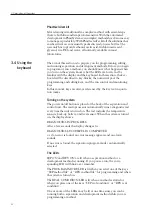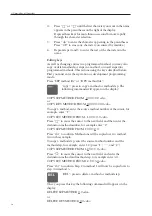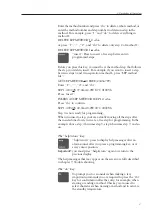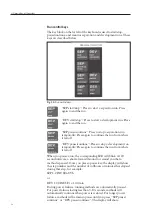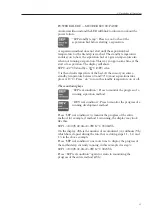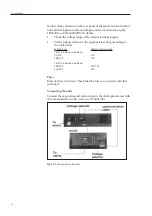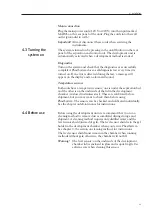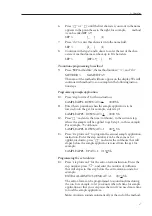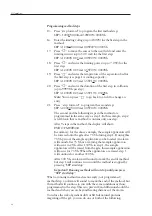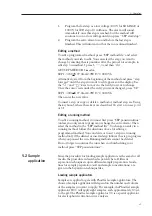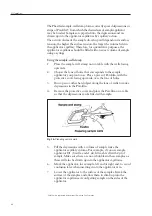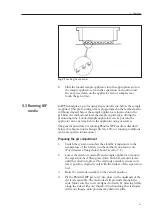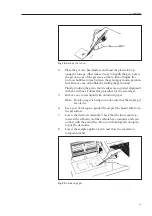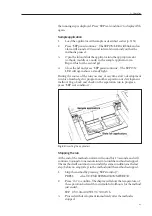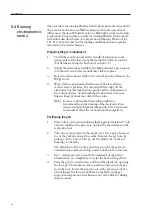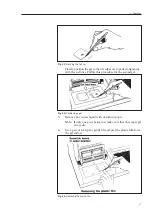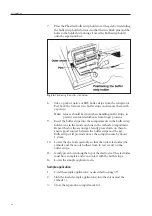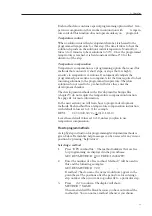
36
Example 1: The following step is programmed:
SEP 1.1 2000V 50.0mA 7 0W 15°C 0200Vh
If one gel is run, the limiting values are 2000 V, 50.0 mA, and 7.0 W,
which are the maximum values PhastSystem can deliver. If two gels
are run, the limiting values for each gel are 2000 V, 25.0 mA, and
3.5 W.
Example 2: The following step is programmed:
SEP 1.1 2000V 12.5mA 3.5W 15°C 0200Vh
If one gel is run, the limiting values are 2000 V, 12.5 mA, and 3.5 W.
If two gels are run, the limiting values for each gel are 2000 V,
12.5 mA, and 3.5 W.
Example 3: The following step is programmed:
SEP 1.1 2000V 30.0mA 5.0W 15°C 0200Vh
If one gel is run, the limiting values are 2000 V, 30.0 mA, and 5.0 W. If
two gels are run, the limiting values are for each gel 2000 V, 25.0 mA,
and 3.5 W.
Note:
The sum of the current for two gels and the sum of the power for
two gels exceeds the maximum values. Thus, the limiting values for
each gel in this example are the maximum available.
How to program a method
A step by step instruction for programming a separation method is
given below. Remember that help messages can be accessed at any
cursor position by pressing ”help/return”.
Selecting a method
1.
Press ”SEP method file”. The method numbers that are free for
programming are displayed in the parentheses:
GET SEP METHOD 0.0 FREE (123456789)
2.
Enter the number of a free method before the period; method 3
will be used in this and the following examples:
GET SEP METHOD 3.0
(
)
If method 3 had a name, the name would now appear in the
parentheses. Press ”do”.
3.
The display will show.
METHOD 3: NAME
The name field will he blank because you have not named the
method yet. You can name the method whenever you choose.
Naming a method
4.
Press ”name method”. The display will show.
SEP 1
[_
]
(A)
5.
Press ”step forward” twice, to display the name field for
method 3:
SEP 3
[_
]
(A)
5. Operation

